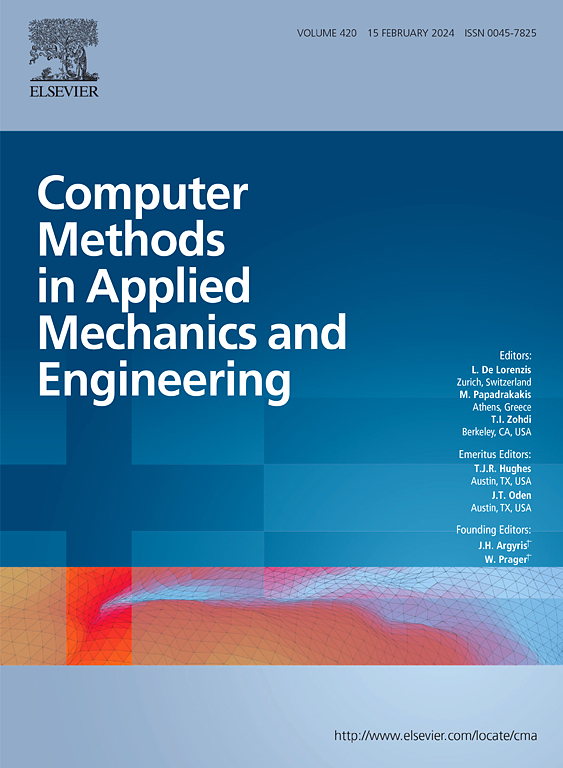Information entropy regularization method for structural identification with large-scale damaged parameters
IF 6.9
1区 工程技术
Q1 ENGINEERING, MULTIDISCIPLINARY
Computer Methods in Applied Mechanics and Engineering
Pub Date : 2025-03-27
DOI:10.1016/j.cma.2025.117947
引用次数: 0
Abstract
With the advancement of structural health monitoring technology, the increasing precision in modeling, scalability of model parameters, and complexity of external environments have introduced significant challenges to damage identification. Notably, the ill-posed nature of large-scale parameter identification from refined models has become a critical technical challenge. Regularization methods are widely employed to mitigate ill-posedness and control the complexity of identification problems. Traditional regularization methods often penalize imbalances in damage parameters, leading to errors and suboptimal convergence, failing to accurately reflect actual damage conditions. To address these challenges, an information entropy regularization term is introduced to capture the distribution of structural damage location and severity. By integrating regularization term with an adjoint sensitivity optimization algorithm, a refined iterative approach is developed to manage large-scale damage parameter identification from detailed finite element models. Numerical analyses on a 2D stress plate and a 3D wing, along with experimental validation on impact damage of clamped plates, demonstrate the accuracy and effectiveness of the proposed method.
求助全文
约1分钟内获得全文
求助全文
来源期刊
CiteScore
12.70
自引率
15.30%
发文量
719
审稿时长
44 days
期刊介绍:
Computer Methods in Applied Mechanics and Engineering stands as a cornerstone in the realm of computational science and engineering. With a history spanning over five decades, the journal has been a key platform for disseminating papers on advanced mathematical modeling and numerical solutions. Interdisciplinary in nature, these contributions encompass mechanics, mathematics, computer science, and various scientific disciplines. The journal welcomes a broad range of computational methods addressing the simulation, analysis, and design of complex physical problems, making it a vital resource for researchers in the field.

 求助内容:
求助内容: 应助结果提醒方式:
应助结果提醒方式:


